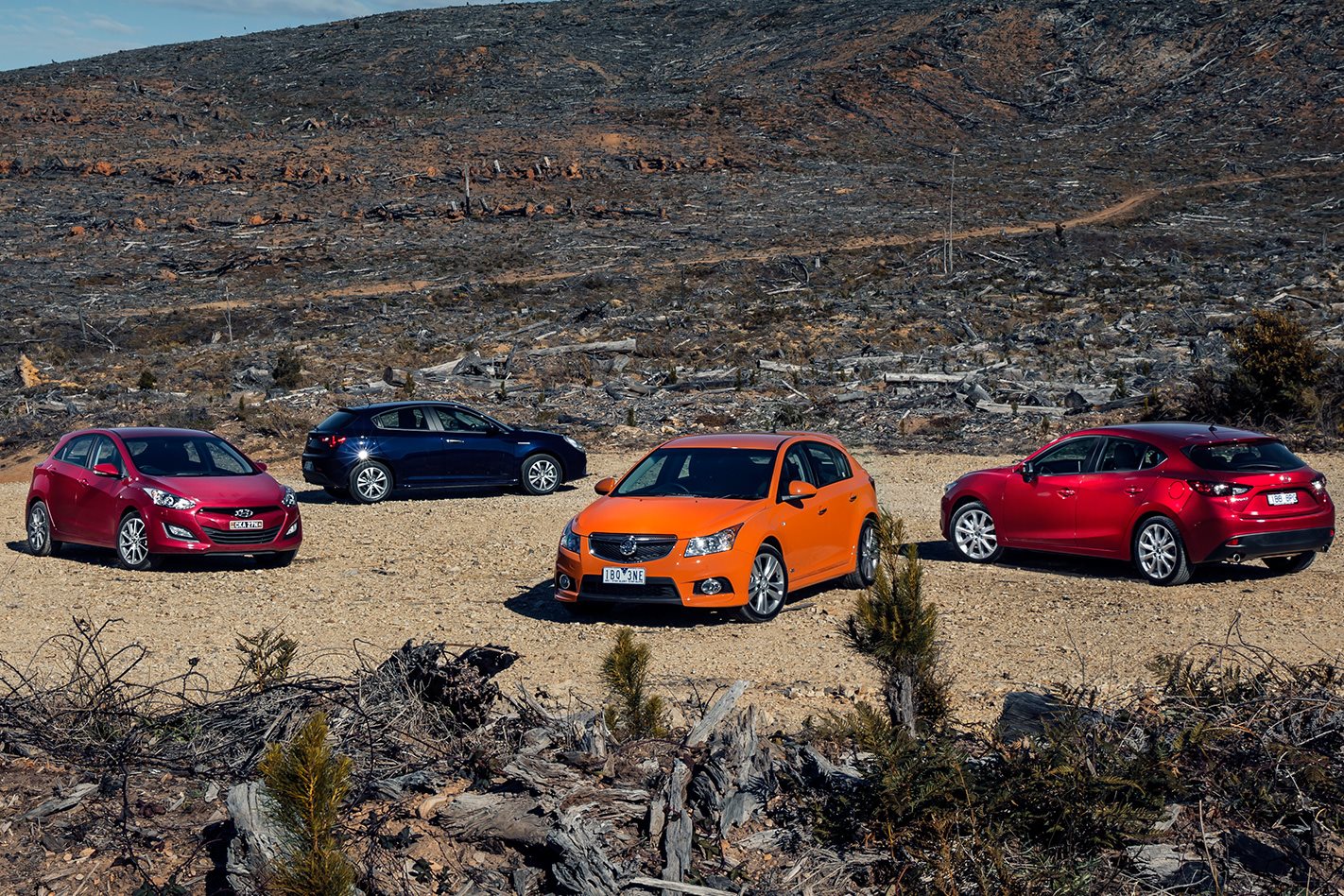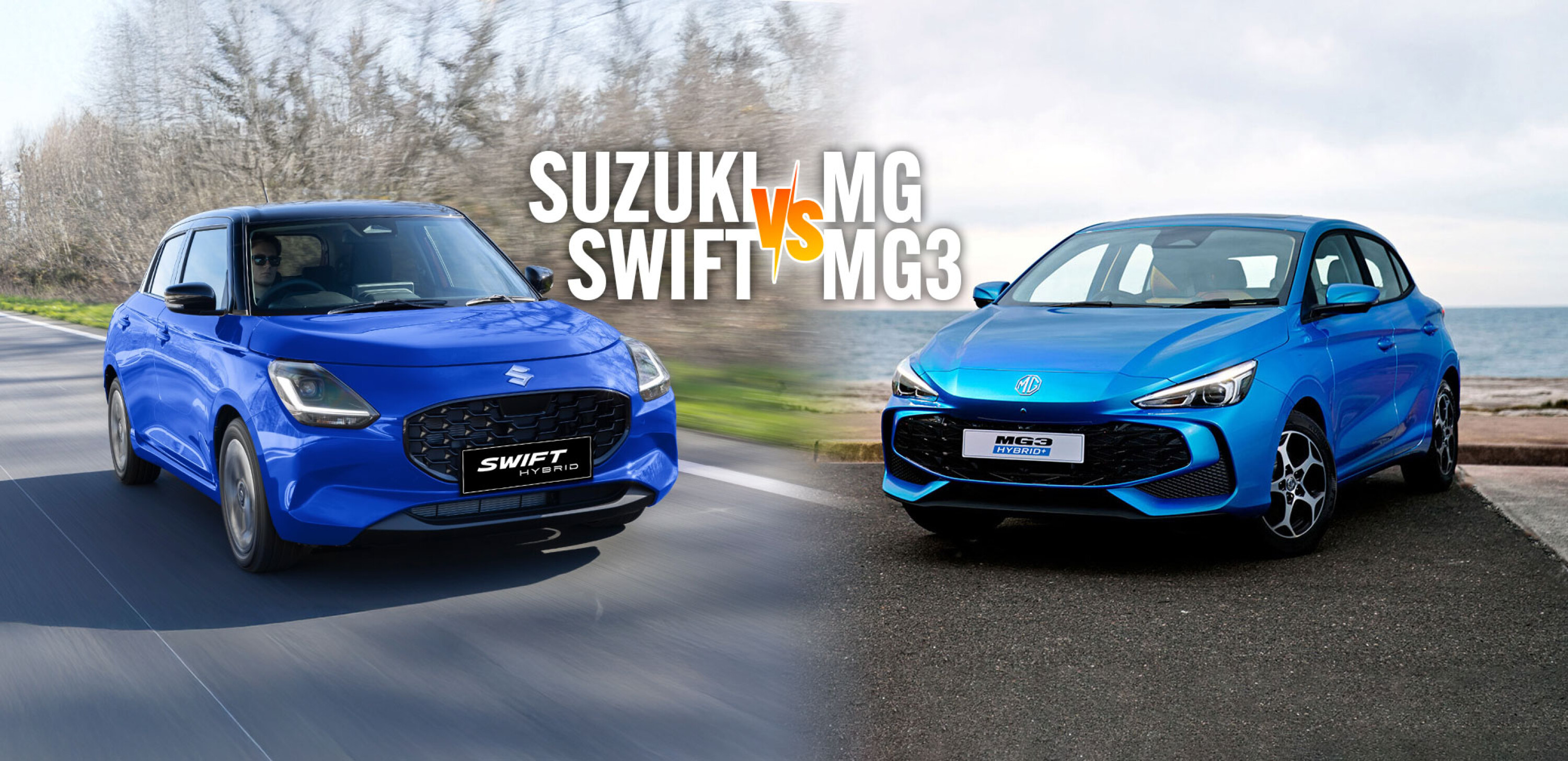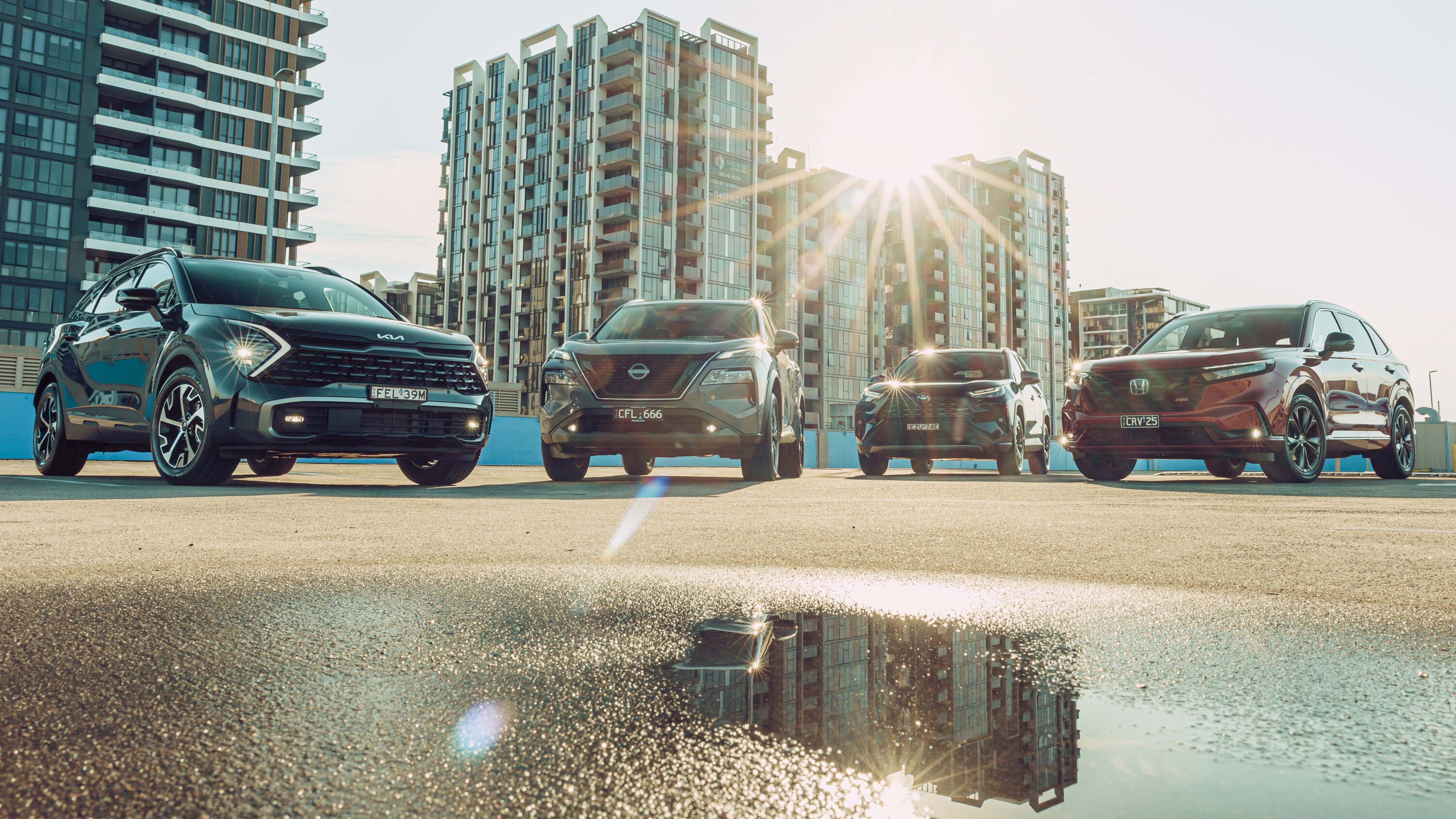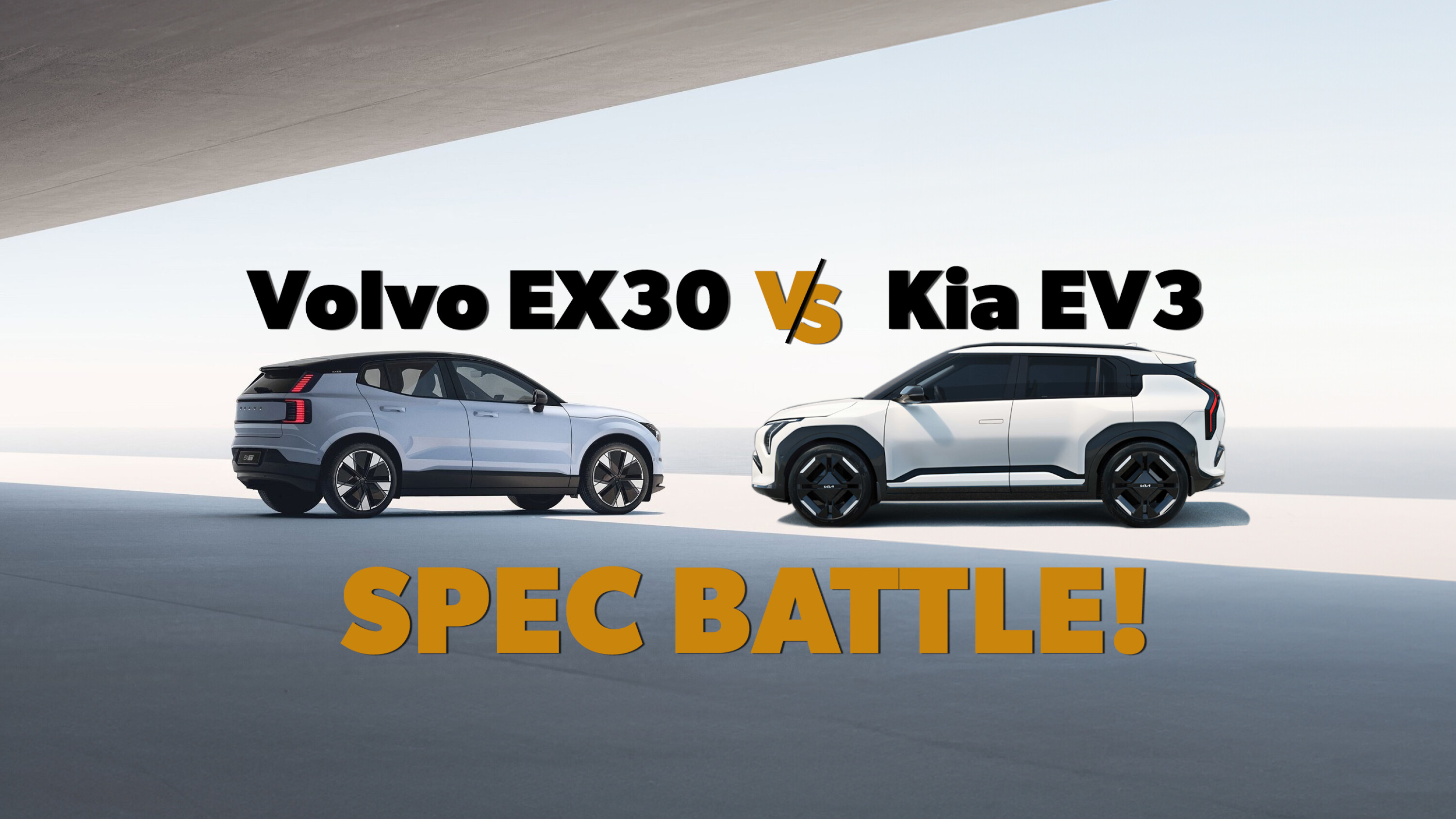Italy takes on the world as we turn up the heat on four popular hatchbacks.
First published in the November 2014 issue of Wheels magazine, Australia’s most experienced and most trusted car magazine since 1953.
Can’t wait to see the final scores? Jump to the verdict now.
THEY’RE the Claytons of performance five-doors – the hot hatches you have when you’re not having a hot hatch. But unlike the non-alcoholic spirit famously spruiked by actor Jack Thompson, ordering a ‘warm’ hatch for yourself shouldn’t result in laughter and ridicule.
Instead, if the formula is just right, you should bag yourself fun and function in equivalent doses – balancing strong performance with liveability, efficiency and visual subtlety, combined with a snappier insurance premium. All for an accessible $26-28K if you don’t mind shifting gears yourself, which you shouldn’t.
Plus, you get choice. I don’t think an Alfa Romeo, a Holden, a Hyundai and a Mazda have ever starred in a Wheels comparison together, yet here we have a Giulietta Progression ($27,450), a Cruze SRi Z-series ($26,490), an i30 SR ($27,990) and a Mazda 3 SP25 ($25,890) in a direct face-off for warm-hatch honours.
In a perfect world, we’d also have had a Ford Focus Sport ($25,890) and a Nissan Pulsar ST-S ($25,490) along for the ride, but what we’ve ended up with is the sweet spot of warm hatchness.
Four bright sparks
Igniting this medium-heat debate is the newest car here – Mazda’s third-generation 3 in base SP25 guise. Outwardly, it misses out on the trick headlights and LED tail-lights of the GT and Astina versions, but given Mazda Australia doesn’t badge its cars with trim-level designations, most punters would never know you bought the cheap one with the same effervescent drivetrain and saved thousands.
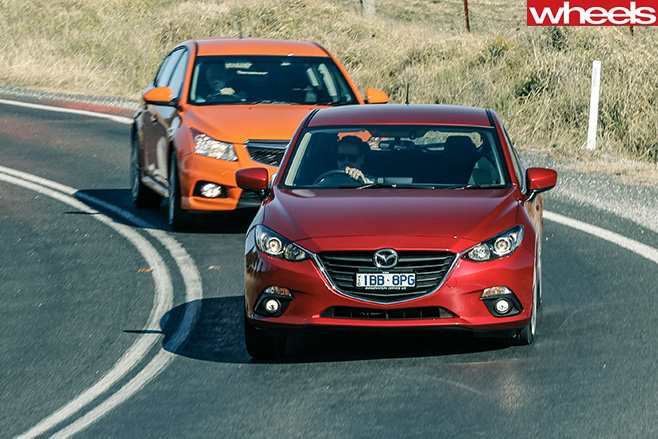
The Mazda matches the Holden on almost every count, and includes an idle-stop system, but it has cloth trim, no seat heaters and height adjustment only for the driver, though it uniquely offers a $1500 safety pack with blind-spot monitoring, rear cross-traffic alert, city auto-brake and an auto-dimming rear-view mirror.
The Alfa adds another grand to the Holden’s tally, but for many the allure of an Alfa Romeo badge and the Giulietta’s arresting styling may be something you can’t put a price on. The Progression-spec Giulietta wears fairly unsporting 16-inch alloys, lacks navigation of any kind (until an updated model arrives in the first quarter of 2015) and demands extra for rear parking sensors, but it does get height-adjustable front seats with electric lumbar support, four auto up/down windows, Bluetooth and an idle-stop system.
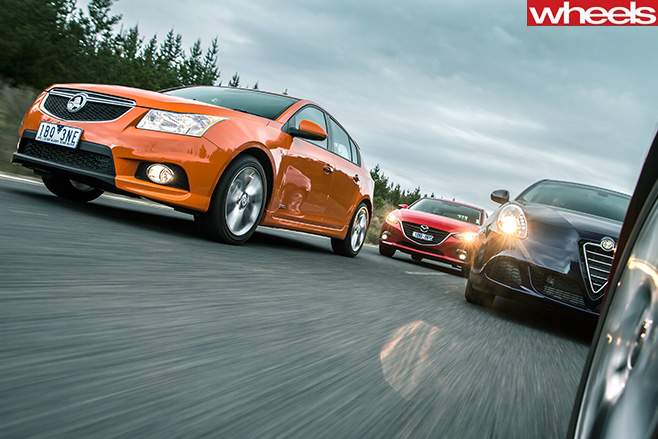
Warm and warmer
The i30 SR does get its own model-specific engine though – a 129kW/209Nm direct-injection 2.0-litre – and it’s a highlight. Rev-obsessed and rewarding of a committed right foot, it really delivers beyond 5000rpm and will comfortably extend to 7000rpm if you don’t mind a bit of noise, stirred by a reasonably slick six-speed gearshift. But bottom-end urge is not this engine’s forte. When the tacho needle drops below 4000rpm, acceleration fades, as demonstrated by the i30’s rolling-start languor in taller gears. It takes nearly twice as long as the turbocharged Giulietta to accelerate from 80-120km/h in sixth.
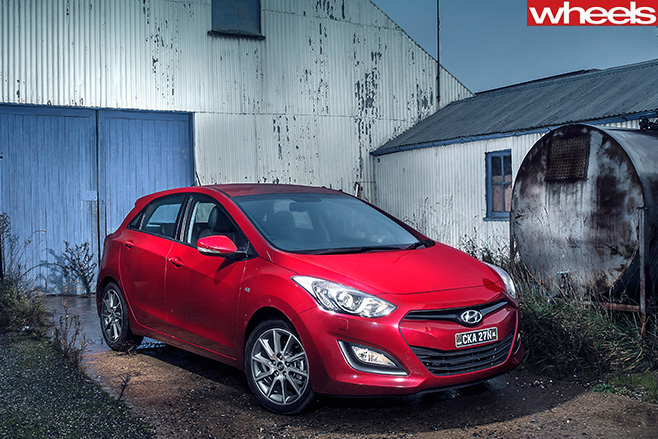
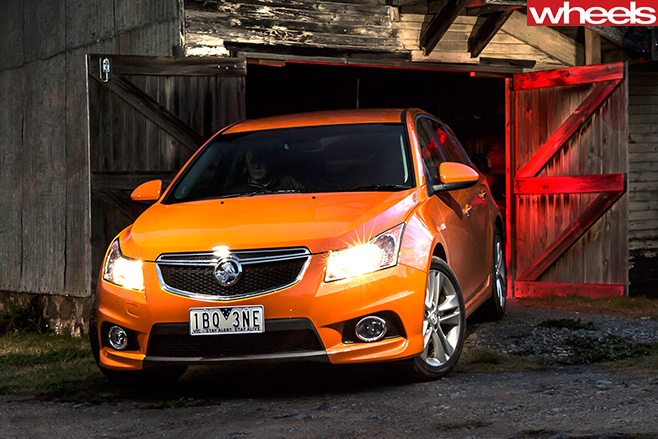
Jumping into the Giulietta is like turning up the heat from toasty to almost hot. The 125kW MultiAir version of Alfa’s robust 1.4-litre turbo four lacks the exceptional bottom-end flexibility of the 88kW base unit, but besides a small amount of turbo lag below 1500rpm, it feels much stronger, especially when revving hard.
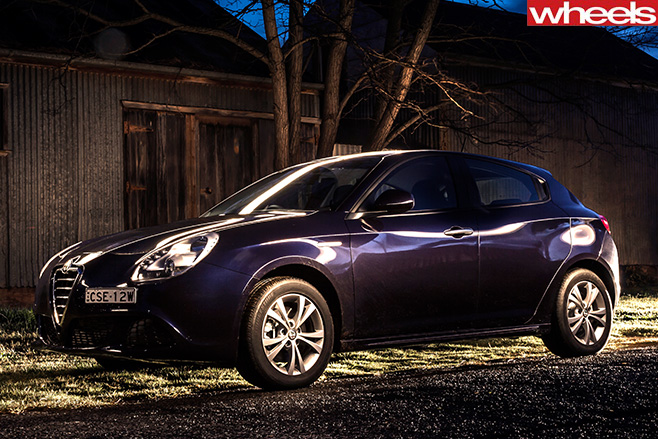
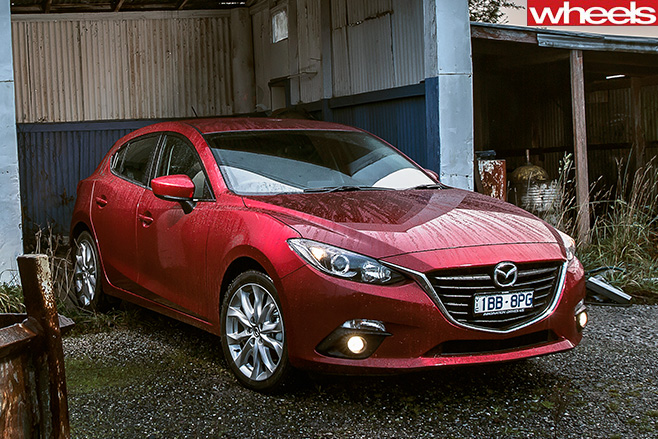
Pouring on fuel
You don’t quite get that impression from looking at the SP25’s acceleration figures, however. Unlike the almost over-tyred Cruze, the Mazda struggles for grip off the line, axle-tramping its way to a less than spectacular 0-60km/h time of 3.8sec, hampered by a curious lull in engine response after quickly snatching second gear, not the helpful chirp of its front tyres necessary to keep the engine singing.
In the upper ratios, the SP25 flexes its muscles and quickly surges ahead of the Giulietta, but there’s often a sense that Mazda’s SkyActiv-G 2.5 has been restricted from giving its best. The zingy engine’s premature rev limit – just 6200rpm – seems to encroach all too quickly when pushing on.
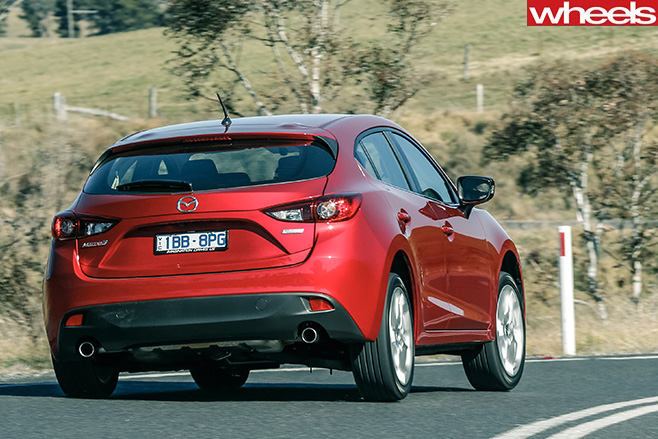
Some like it hot
Thanks to being extensively honed by Holden’s talented chassis engineers over a number of years, the Cruze SRi is also a handler. In terms of tyre grip and neatness of cornering line, the Cruze is the sportiest car here. Wearing fat, high-quality 235/45R18 Bridgestone Potenza RE050As, the it deserves big praise for its steering precision, poise and adjustability. It also manages to combine excellent body control with a surprisingly liveable ride for such a tightly suspended car on 18-inch wheels, even though you’re constantly aware of what’s going on underneath.
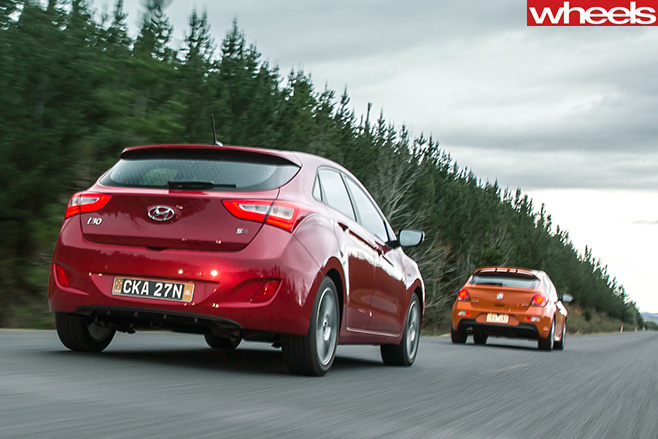
The Alfa’s involvement and eagerness more than make up for its relative softness because the 125kW Progression runs the same comfort-biased suspension tune as the base version. To get sports suspension in a non-QV Giulietta, you need to start with a $31,350 Giulietta Distinctive and option an extensive Sportiva pack for $3500.
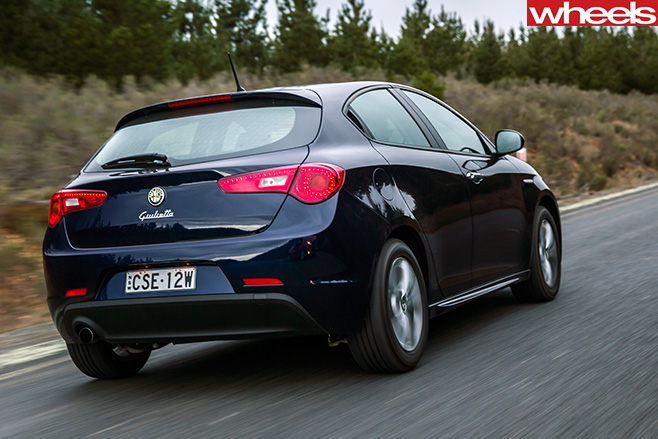
Much the same applies to the Mazda 3 SP25, though its steering lacks the Giulietta’s instant connection. Get stuck into it and the SP25’s broad grip, excellent balance and effective power-down all demonstrate the impressive dynamic talent of its new-generation platform. The Mazda’s tight body control and rewarding rear-end balance harmonise nicely with its steering feel and response when loaded up, and the alacrity of its drivetrain. But it transmits a fair amount of tyre noise (a long-time Mazda weakness) and its jittery initial ride compliance is less forgiving than the Cruze’s.
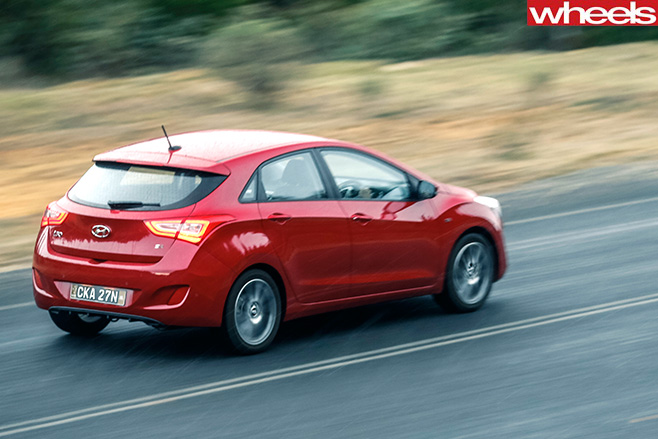
Cornering in the wet is another matter. The i30 SR’s tyres turn to skates when asked to corner on a moist surface, inducing understeer on turn-in and oversteer when you back off to bring it into line. Yet even in the dry, its tyres lack adhesion. Look no further than the SR’s mediocre 100km/h-0 braking distance of 39.4m, which is some way behind the slightly fade-prone Mazda (37.5m) and slightly over-assisted Alfa (36.4m), and well off the Cruze’s excellent 35.4m.
A seat by the fire
Not helping matters is the i30’s multi-setting electric steering which feels gluggy and vague around straight ahead, yet even muddier and more artificial in ‘Sport’ mode. Switching to Comfort around town delivers some improvement in weighting crispness, but even then you’re left holding a wheel that is too big, wrapped in artificial-feeling leather, and sitting on a seat that’s mounted too high.
In comparison, its rivals feel much sportier, with relatively low-set driving positions and, in the Alfa and Mazda, terrific three-spoke steering wheels.
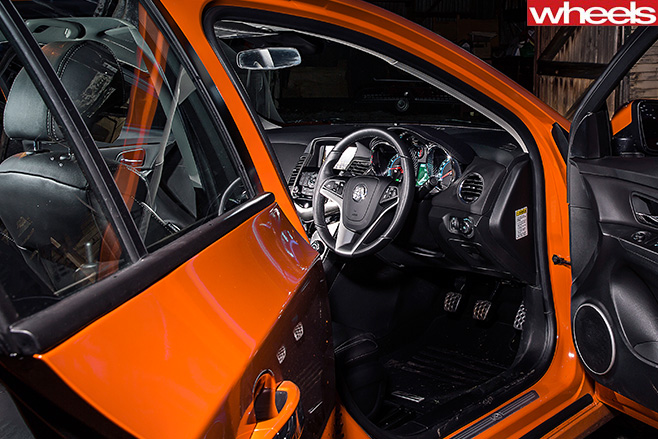
There’s a solid back seat in the Cruze, too, offering a slightly elevated view, but its cushion could use more under-thigh support, and the only rear cupholders are on top of the armrest. Rear passengers also sense the Cruze SRi’s busy ride, though it handles really big hits with aplomb. And its nicely trimmed 413-litre boot is brilliant, easily the biggest here.
The Alfa’s interior design is almost as aged (2010) and only months away from receiving an update (centred around a dashboard multimedia touchscreen), but at least it has personality. Its front seats are the most adjustable and the most comfortable, and while its ribbed cloth trim is obviously designed to be durable, it also has a dose of Italian cool. However, there’s frustration ahead if you happen to be lugging more than one takeaway coffee or want somewhere to put a drink bottle.

If its room you want, nothing beats the well-packaged Hyundai. Rear-seat passengers sit deep into this group’s best seat, though it trades the superior forward vision of the Cruze and Giulietta for greater under-thigh support. Its centre armrest will hold coffees and its doors house 600ml water bottles, but that’s where the i30’s niceties end.
Up front, the centre armrest won’t slide, making it useless for resting limbs on, and despite sporting leather trim, the front passenger seat has the most basic adjustment possible, in contrast to the eight-way electric driver’s pew.

The Mazda goes one better than the Hyundai with an even higher level of finish quality and classier graphics for its centre touchscreen. There’s a refreshing minimalism to the new 3’s interior, though it mixes some great pieces of design with some duff elements, like its lack of adequate front-seat adjustment, delivering a driving position that’s never quite ideal. And the base SP25’s instrument design is style-driven tat. Cue a squinty digital tacho and massive analogue speedo in lieu of two equal-sized, clear dials.
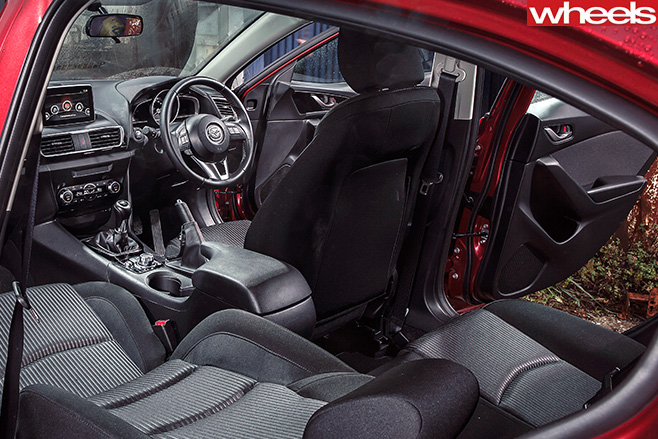
So which burns brightest?
Sadly, that’s one thing that ultimately betrays the i30’s Korean econocar origins – a DNA strand too deeply embedded for the Aussie-developed SR to fix. It’s quite handsome, with a roomy, inviting interior and what appears to be plenty of kit. Solid drivetrain, too, but there’s something superficial about the i30 that no amount of tuning or fancy trim can overcome. At least not without a new steering set-up and decent tyres.
Where the i30 SR lacks polish, the Cruze SRi has been honed to within an inch of its life. Its handling poise and pointy steering deserve praise, and Holden has done a fine job making 1474kg of lardy hatchback feel spritely. In fact, the Cruze’s best bits are all the Holden stuff – its chassis tune, its hatchback design and its colour (Fantale orange, just like an SS-V’s). But the rest lacks the design sizzle that gets a car like the i30 over the line at purchase time.
What’s guaranteed to shift Giuliettas into driveways is its gorgeous styling. And, once driven, its enthusiasm. From the moment you turn its grippy steering wheel, the Giulietta has personality, its front and rear ends talking to each other, goading its driver to push harder, or drive longer. It’s comfortable, too, with plenty of useable room, including the boot. But it doesn’t matter how long the Alfa’s warranty is, it still carries some baggage in the reliability department, as its 51 percent three-year resale attests.
In contrast, with resale at nearly 68 percent and a reliability record founded on years of near-faultless operation, the Mazda 3 SP25 has to emerge as the warm hatch to beat. Its sporty styling demands packaging compromises and it lacks the Alfa’s instant effervescence, but deep down there’s a fine driver’s car waiting to have its talents exploited.
The base SP25 isn’t perfect – in fact, we’d try and stretch to the GT version with its superior instrument arrangement and more comfortable electric seats – but as both the cheapest car here and arguably the most accomplished, warm has never felt so toasty.
Absent friends
NOT quite making it to the starting grid was Ford’s Focus Sport and Nissan’s turbocharged Pulsar ST-S. The Focus would’ve been a great benchmark for dynamics, but its torque-deprived 2.0-litre four would have been old news, given there’s a facelifted model due early next year with a 1.6-litre ‘Ecoboost’ turbo-petrol four in its armoury. And while Nissan’s 140kW Pulsar ST-S would’ve had no trouble making ground on the straights, we fear its underdone chassis may have left it floundering in the corners, some way short of warm-hatch greatness.
Three way
TOWARDS the lower end of Hyundai’s vast i30 line-up is arguably the budget warm hatch – simply called the i30 SE. Unlike the Korean-sourced five-door, the three-door SE comes from Slovakia and gets a proper multi-link rear end like the i30 SW wagon, not the five-door’s inferior torsion beam. The SE three-door also looks cooler, though you’ll have to settle for the same 98kW/163Nm direct-injection 1.6 used in top-spec Rios. It’s a good engine and, in six-speed manual form, only has to lug 1192kg, but swift progress demands frequent gear shifting.
Why no Golf?
VOLKSWAGEN does not at present offer a true warm Golf – only the plush $32K Highline DSG or the hot $41K GTI – but a solution is imminent. You can forget about the GTD because VW Australia has decided not to continue with a performance Golf diesel. Instead, a warmer Golf will be part of a future range-wide roll-out of VW’s R-Line.
Verdict
 MAZDA 3 SP25
MAZDA 3 SP25
Price as tested: $26,258 *Includes metallic paint ($200), floor mats ($168)
NCAP rating: 5 stars (Aus)
Fuel economy: 9.9L/100km (test average)
Acceleration: 0-100km/h: 7.9sec (tested)
Plus: Slick manual; strong economy and resale; rear-end balance
Minus: Road noise; lacks front seat adjustment; poor rear seat vision
Verdict: 7.5/10

ALFA ROMEO GIULIETTA
Price as tested: $27,950 * Includes metallic paint ($500)
NCAP rating: 5 stars (Euro)
Fuel economy: 10.3L/100km (test average)
Acceleration: 0-100km/h: 7.5sec (tested)
Plus: Connected steering; poised and involving chassis; distinctive styling
Minus: No sat-nav or rear air vents; lacks dynamic polish; road noise
Verdict: 7.0/10
 HOLDEN CRUZE SRi Z-SERIES
HOLDEN CRUZE SRi Z-SERIES
Price as tested: $26,990 *Includes premium paint ($500)
NCAP rating: 5 stars (Aus)
Fuel economy: 12.3L/100km (test average)
Acceleration: 0-100km/h: 8.3sec (tested)
Plus: Sharp handling; well-damped ride; strong brakes; polished city manners
Minus: Needs to lose some weight or boost grunt; dated cabin; thirst
Verdict: 6.5/10
 HYUNDAI i30 SR
HYUNDAI i30 SR
Price as tested: $27,990
NCAP rating: 5 stars (Aus)
Fuel economy: 10.2L/100km (test average)
Acceleration: 0-100km/h: 8.1sec (tested)
Plus: Rev-obsessed engine; solid packaging; handsome styling
Minus: Mushy, muddy steering; too-big steering wheel; poor tyres
Verdict: 5.5/10

